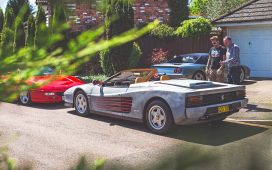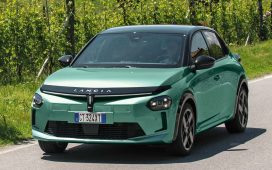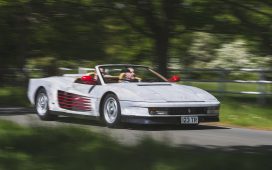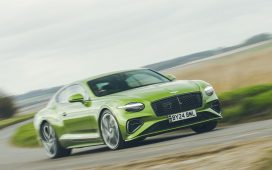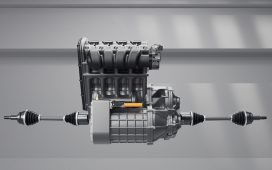As the city’s previous road resurfacing plan from 2017 wraps up this year, Birmingham Department of Transportation (BDOT) Director James Fowler says he is excited to get started on a new plan- one that will make the city easier and safer to bike, walk and drive.
Fowler also shed light on some ways the city is working to restructure their towing ordinance after multiple complaints from Birmingham drivers accusing company Parking Enforcement Systems, of predatory towing practices.
We chatted recently about the new resurfacing plan BDOT is working on for the city’s roads, can you tell me a little more about that?
Just in general with our resurfacing program we are now consistently investing in paving year over year and the amount that we’re able to invest each year continues to grow. So, this year when we combine our city’s funding with some additional grant funding we’ve received we’ll actually be investing close to $20 million in this calendar year in paving.
But then next year the mayor wants to even further increase the city’s contribution to paving. So that consistency is helping us have an ongoing program which I think people are starting to feel and will certainly feel in the future.
And I know you’ve mentioned part of the new resurfacing program involves hiring a consultant to look at Birmingham’s roads and decide what areas need to be resurfaced. You also mentioned accepting some community input during this time. So, are there any plans to hold community meetings where people can bring up concerns about roads in their neighborhood?
I don’t know that we’re planning to have meetings. We’re trying to start the process using condition data so that we have a good sense of where, from a technical perspective, our biggest problems are. So, this year we are investing in hiring a consultant to go out and survey all of the roads using updated technology and that’s going to be our basis for starting the conversation about where to pave going forward.
However, we do receive already, as you can imagine, many complaints about which roads to resurface. So, we collect those as we receive them. We don’t necessarily want to have a complaint-based process for resurfacing roads, but it is something that we consider as we’re looking at planning ahead.
Beyond this new plan, are there any other BDOT projects coming up that you’re excited about?
Yeah, for sure, there are several things we’re excited about. One of those is that we were awarded the Reconnecting Communities grant in partnership with the [Birmingham] Transit Authority.
So, we’re going to use that total million-dollar budget to set a vision for where the city needs to head in terms of transportation over the next 30 years. And although that will be a process that goes beyond this year into next year and beyond, because I’m sure that will be a big effort, we’re excited about getting that started.
We know that one of the issues we want to try to address in that is that we are an extremely auto dependent city and region. So, we want to plan very seriously for how we can provide better access to alternative modes of transportation which include walking, public transportation, and cycling.
So that’s one of the projects we’re excited about, we’ve got several others. We’ve got several streetscape projects that are going to be moving forward in the next 12 months including a streetscape project near Pepper Place on 2nd Avenue South. There’s one in Avondale. And we’ve got one on 19th Street Ensley and a few other besides. Those are projects that have been on the books for a few years but they’re finally about to start moving forward.
Also, our traffic calming initiative that we’ve been working on for a few years has really taken off. It’s become extremely popular and we’re hoping and expecting that that program will continue to grow overtime but that’s ultimately trying to find ways to slow cars down in a lot of our neighborhoods throughout the city.
And then lastly we are, during the warmer weather this year, trying to make a big push for roadway striping and just doing basic striping maintenance throughout the city.
Could you explain the correlation between warm weather and striping projects for those of us who don’t know much about roadwork?
Yeah, that’s a great question. So, paint doesn’t adhere as well in the colder months. So, it cures differently to the asphalt. So, the best time of year for us to put down striping is during the warmer months.
So, from now until October is our best weather for putting down roadway paint. So, we’re starting that up right now and trying to get to as many places across the city as we can.
And will that require any lane closures? Will you guys be working on that at night like they usually do with ALDOT projects?
For local streets we typically are doing it during the day. It will require lane closures but usually not like an all-day street closure. It might be for a few hours here and there. That’s just kind of rolling throughout the whole city as the crew goes so it’s not something that we usually advertise way in advance.
Gotcha. So, in your response about upcoming projects, you actually brought up a lot of programs that I wanted to discuss. So, the first thing I want to ask more about is that traffic calming policy. I know you guys started that a couple of years ago, can you tell me what sort of changes you guys have noticed since that policy’s introduction?
Well, the biggest thing that we’ve noticed since we first started the program and started collecting requests is that we now have close to 200 streets where people have requested traffic calming. So, it’s an extremely popular request and one where there seems to be a really great need. So that’s the biggest thing that we’ve seen.
We’re able, at our current pace with our current resources, to address about 12 streets a year. So that gives you a sense of how long it can take us to move through all the streets that are requested. However, that being the case, we’ve seen that the street where we’ve already been able to make installations of speed cushions and speed humps that it’s having a huge effect.
Residents on those streets tend to give us very positive feedback. Having personally driven down a lot of those streets I can attest that the speed humps do help. So, it’s something that I hope we’re able to continue doing a lot more of going forward. So, I’m excited about that.
I would say too that I’m also hopeful that as Birmingham pushes forward with this that a lot of the other jurisdictions around us start to do it too. And some are. It just seems like such a good thing for a lot of our residential streets around. So, I’m hoping it’s a thing that becomes very common.
Another thing I wanted to ask about that you mentioned is sort of this push to make Birmingham less car dependent. I’ve noticed that across the metro there’s been a focus on establishing green spaces and other types of infrastructure that encourages people to get outside and use their cars less. So, I wanted to ask if BDOT is working on any projects that align with this goal that you haven’t already mentioned. Also, how do you think people that live here can benefit from things like this?
So, streets at the local level are definitely a part of our open space. We haven’t always thought of them that way, but they should be part of our space such that they facilitate walking and using public transportation and biking and congregating. So, a big focus of ours is to look at a lot of our streets and figure out how we can slow down the car speeds, that’s a big one. And then make sure we’re providing safe facilities for all users on streets.
So, we’re doing that in a few different ways. One of the biggest ways is through our resurfacing program. So, as we’re going through and resurfacing streets we look at each one to see if it’s a good candidate for reallocating some of that space to cycling or creating better crosswalks. So that gives us a good way to do that as we’re doing resurfacing.
Some other ways we’re doing that as well are through the streetscape capital projects that were mentioned.
And there are also a number of miscellaneous initiatives that we may not think of as transportation initiatives, but they spur us to make other investments such as the World Games. So, we went through in advance of the World Games and installed a lot of different accessible ramps at intersection corners around the city, particularly at our venues. So as different initiatives and efforts come up, we’re trying to tag on to continuously improve our transportation system.
We’re hoping the planning study that we do using the Reconnecting Communities grant really sets an aggressive vision for how we can become more walkable, more transit accessible, and more bikeable.
On the subject of future plans, The Regional Planning Commission of Greater Birmingham recently released their 2050 transportation plan. How will BDOT be working with them over the next 30 or so years to carry that plan out?
So, within the Birmingham region, and this is true within the state and the southeast as well, we’re still very car dominated. And I think overtime as that plan continues to get updated, it’s updated every four years, we would like to work on shifting our vision to be even more aggressively geared to becoming a multi-modal region. It is heavily talked about in the 2050 plan, so I think we need to continue to build on that.
So, my hope is that within the region Birmingham can be a leader in trying to create a more multi-modal city. One where we don’t feel like we have to drive to all of our destinations. The most recent data from the American Community Survey shows that within our region, if we set aside teleworkers, of the people that leave their home to go to work, almost everybody drives. So, if we set aside teleworkers I think it comes out to be almost 97% are in a car to get to work or school.
So unfortunately, that’s not unique around the country. So, we really want to be serious about trying to reduce that percentage within Birmingham and within the greater region.
So, we want to continue to work with the regional planning commission around doing that.
What is the greatest shift you would like to see in Birmingham area transportation during your time as director?
I’d like for us to drive less. I’d like for us to set an aggressive vision for how we can move away from being a region where we all feel like we need to drive to our destinations and get to a place where we all feel like we can comfortably walk or conveniently take public transportation.
So as Birmingham has made efforts to become more multimodal with the introduction of things like electric scooters and Lime bikes, how has BDOT had to reevaluate the setup of roads to ensure public safety?
So, one of the things that we’ve learned after having implemented scooter and bike share around the city is that it’s highlighted the need for more safe facilities for non-drivers. So, I think that the scooters and bikes definitely have a place within our city and help us greatly with our transportation system. But it’s now up to us to create bike lanes and places where it’s safe for those things to operate and provide good places for their storage that are intentional to make the system convenient.
So, I think they’re good for the city and it just shows us that we still have a lot of changes that we have to continue to make in our transportation system to make those kinds of modes of transportation easy to use and make sense within our city.
How does BDOT’s work benefit people in other nearby cities?
So, I think Birmingham is an asset for everyone around the city. So, we have a downtown that’s a major destination. I grew up outside of the city of Birmingham but spending a lot of time coming to and from downtown and some of the other areas around the city. So, my hope is that as we continue to grow as a city and see investment in our city that we can continue to change how our transportation systems works. So that it’s easier for people to get here and then once they get here, they don’t necessarily feel like they have to drive a car to move around within the city.
I know [BDOT special projects manager] Christina Argo is over more of the work that deals with towing in Birmingham but as BDOT director, how is the department working to address what some are calling predatory towing practices in downtown Birmingham?
Yeah so, we have installed some warning signs at a few locations where we get a lot of complaints but beyond that we’re actually working on a change to the city’s ordinances that regulate practices for tow truck companies and private lot owners.
Mainly we’re focusing on communications. So, we want to make sure that the signage that’s required is very clear and also that the information that’s provided on the signs is easy to understand. We’re also going to have some additional requirements where an app is used to pay such as ParkMobile, which I believe is most of the lots now at this point. But make sure that warnings are provided on those apps so that again the information’s very clear.
So, we think a lot of the problems can be avoided if people fully understand what the rules are and what the expectations are. So, we’re updating our ordinance to clarify a lot of that. Also, some additional accountability will be added for the operators as well in terms of what their responsibilities are if they are going to be towing.

